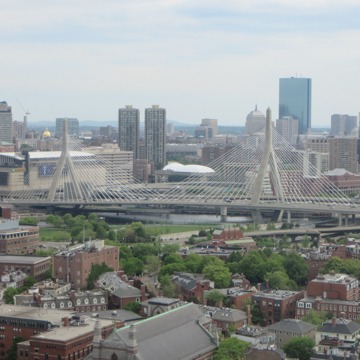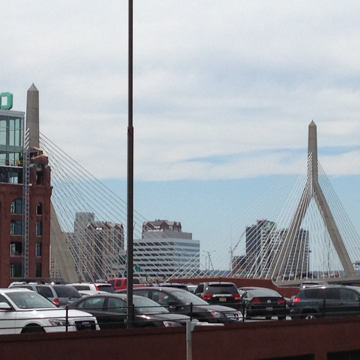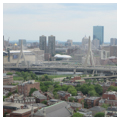One highly visible icon has emerged from the Big Dig project. The new bridge (the name itself a compromise between the civil rights activist and the Charlestown landmark) may be considered as a symbol of the beginning of the new millennium. Cited as the widest cable-stayed bridge (load-bearing, radiating from masts to support points on its deck), its 1,500-foot-long main span is of steel, with concrete in the back spans; there is a 700-foot span between the two towers. Inverted Y-shaped towers support 116 cables that anchor the span of the ten-lane bridge to land-based back spans. But, alas, the bridge is only a visual tour-de-force, for vehicles only, connecting the new freeway running under downtown Boston to Charlestown and the north: the bridge at the end of the tunnel.
You are here
Leonard P. Zakim Bunker Hill Bridge
If SAH Archipedia has been useful to you, please consider supporting it.
SAH Archipedia tells the story of the United States through its buildings, landscapes, and cities. This freely available resource empowers the public with authoritative knowledge that deepens their understanding and appreciation of the built environment. But the Society of Architectural Historians, which created SAH Archipedia with University of Virginia Press, needs your support to maintain the high-caliber research, writing, photography, cartography, editing, design, and programming that make SAH Archipedia a trusted online resource available to all who value the history of place, heritage tourism, and learning.




















